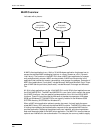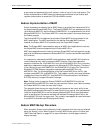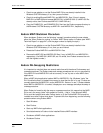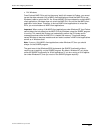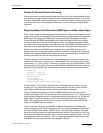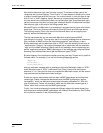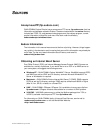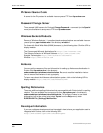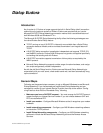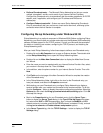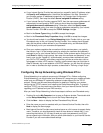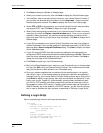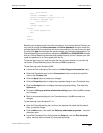
Eudora User Manual Practical Issues
256
QUALCOMM Incorporated
Note that the Macintosh type from this map is empty. This allows multiple types to be
recognized with just one mapping. This is nice for “in” maps because it allows you to cover
a range of creator/type pairs with one map. You must be careful in using this type of map
with an “out” or “both” mapping, though, because an outgoing attachment that matched
this map would have a Macintosh creator, but no Macintosh type. Some Macintosh appli-
cations cannot open files with a missing type. Microsoft Word for the Macintosh can open
files without a type, so this map is fine being marked “both.”
Microsoft Excel for the Macintosh is an example of a program that can't open a file with an
empty type. This is why there are two maps for Excel (the fourth and fifth maps above).
The incoming map for Excel is like the one for Microsoft Word, but the outgoing map
explicitly defines the Macintosh type.
The last map shows that you can have both Macintosh creator/type and MIME
type/subtype in one entry. This map says that if an incoming message has an attachment
that is encoded in MIME and has the “application/postscript” type/subtype, or has a
BinHex attachment with the Macintosh type of “EPSF,” then the resulting file will have an
“.eps”extension. Similarly, if an outgoing message has an attachment with the extension
“.eps” and if the MIME encoding is being used for the message, then the attachment will
get the “application/postscript” MIME type/subtype. If the message was using the BinHex
encoding, then the attachment would get the Macintosh type of “EPSF.”
But what happens if an attachment matches more than one map? Eudora will try and find
the best match. For example, if you had the following [Mappings] section:
[Mappings]
in=xls,XCEL,,,
in=xlc,XCEL,XLC3,,
and you received a message with an attachment that had a Macintosh creator of “XCEL”
and a Macintosh type of “XLC3” (a Microsoft Excel Chart), then the file would get an
extension of “.xlc” since the first map only matched the Macintosh creator, but the second
map matched both the Macintosh creator and type.
Eudora can receive attachments that have both a MIME type/subtype and a Macintosh
creator/type. Eudora understands attachments with the MIME type/subtype “applica-
tion/applefile,” which has Macintosh creator/type information embedded in it. With this
type of attachment, Eudora will consider a match with the Macintosh creator/type as a
“better” match than a match with the MIME type/subtype.
Finally, if an incoming attachment matches two different maps to the same degree (e.g.,
both maps have the same MIME type/subtype with different file extensions), then Eudora
will use the file extension in the first matching map.



